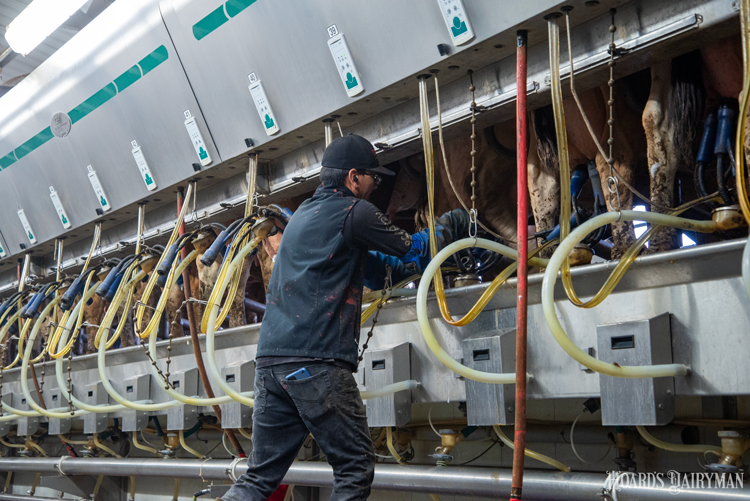
The business of producing milk has always been about doing more with less, said Brandon Treichler during the National Mastitis Council Annual Meeting. There’s no sign of that changing as dairy farmers look to remain profitable while feeding a growing population.
Treichler, the quality control veterinarian with Select Milk Producers, asked how we will meet this need for continual efficiency in the most essential task carried out on a dairy: milk harvesting. The science of milking cows has not and will not change, but our assumptions must, he said.
Due to advances in equipment and milking routine compliance, improvements have already been made. He explained that a study done 10 years ago found that cows were milked for an average of 4.4 minutes with an average flow rate of 6.6 pounds per minute. From the farm visits he conducts, he predicted that today’s cows can produce 8.6 pounds per minute and complete milking in less than four minutes.
Milking efficiency also includes sizing your parlor right, Treichler continued. Most farms group cows by stage of lactation or production, so the highest-producing cows are often milking at the same time. Consider if your meters and other equipment can handle that milk flow.
Be the employer of choice
The most crucial aspect to doing more with less, he said, is in how a dairy manages its employees. The limiting factor in a dairy business is rarely the cow; it is often the people.
“We used to think we could solve problems by throwing labor at them,” Treichler said. However, that is usually not an option in today’s tight labor market. The two largest expenses on a dairy are often feed and labor, and Treichler said that while dairy farmers may see cheap feed again, they are unlikely to again see a plentiful labor pool.
Therefore, the attention must turn to how your dairy farm becomes the employer of choice. Consider what situations you are putting your employees in, Treichler said. This includes factors like shift length, training, staffing, and equipment configuration. Does your team have an environment in which they can succeed?
Dairy farmers don’t get into their career to manage people. Building trust, handling change management, and resolving conflicts may not be natural skills a dairy owner has. “But this is what you need to know,” Triechler said.
While you can outsource areas like agronomy or reproduction if it is not your strong suit, he encouraged all dairy owners to approach leadership and employee relations as their opportunity for continuing education. Learn how you can support your people — and thank them for their contributions — so that people don’t become the limiting factor to your farm’s achievement.
That is especially important in the area of milk harvest, where the people you hire and develop are a critical component of the product you send to market. The parlor is either the last place to improve milk quality or the last place where days, months, and weeks of effort are undone, said Treichler. Setting your team up for success helps them do their best job.
Idaho dairy farmer Hans Nederand echoed that thought later in the conference. There aren’t a lot of new ideas to milk cows, he agreed. “But the great dairies are the ones that persevere, encourage good milking routines, and make sure their employees know the ‘why’ of their job,” he said.








